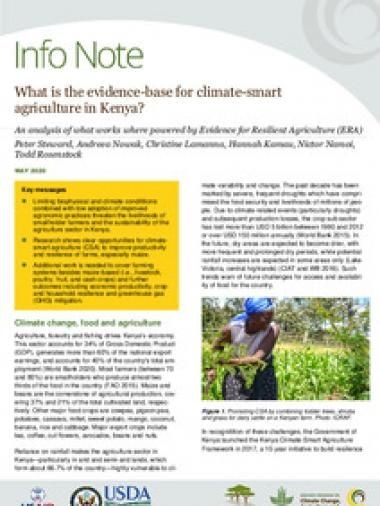Agriculture, forestry and fishing drives Kenya’s economy. This sector accounts for 34% of Gross Domestic Product (GDP), generates more than 60% of the national export earnings, and accounts for 40% of the country's total employment (World Bank 2020). Most farmers (between 70 and 80%) are smallholders who produce almost two thirds of the food in the country (FAO 2015). Maize and beans are the cornerstone of agricultural production, covering 37% and 21% of the total cultivated land, respectively. Other major food crops are cowpea, pigeon pea, potatoes, cassava, millet, sweet potato, mango, coconut, banana, rice and cabbage. Major export crops include tea, coffee, cut flowers, avocados, beans and nuts.
DOI:
https://hdl.handle.net/10568/108158
Skor altmetrik:
Jumlah Kutipan Dimensi:



















